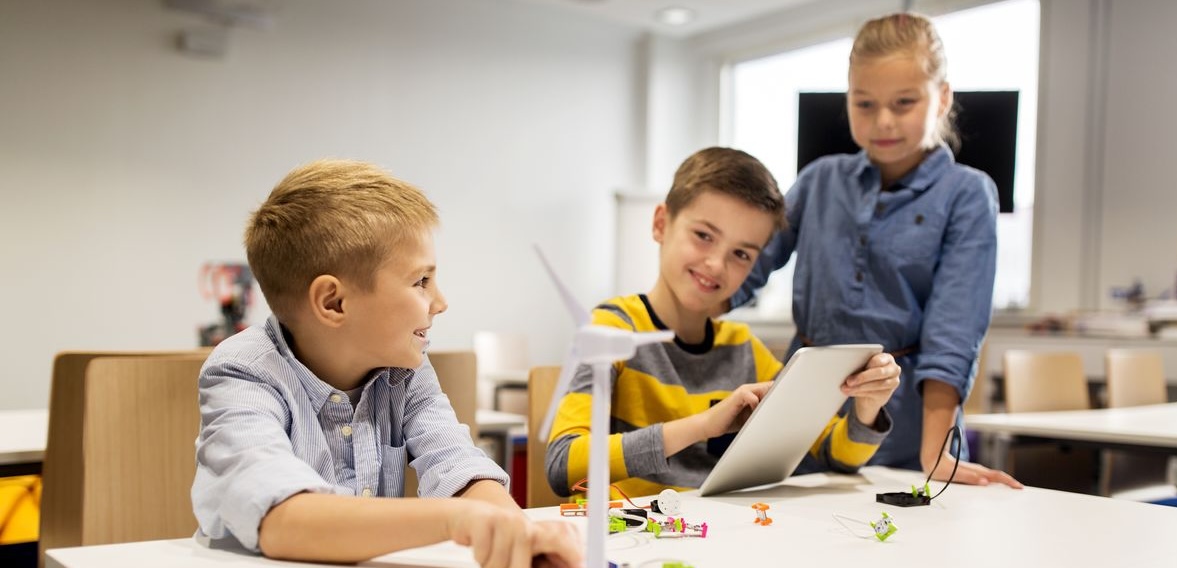When introducing 3D printing, many schools and universities introduce just one or two printers, largely driven by budget restrictions.
Phasing the introduction of 3D printing is a good approach as it allows you to monitor how students and faculty staff interact with the new technology, test it, and plan your expansion accordingly. However, soon enough, more printers will be needed as student and faculty usage requires them.
Here are five considerations when developing your 3D printing expansion plan.
Here are five considerations when developing your 3D printing expansion plan.
1. Peak and quiet times
The first step in planning the rollout of additional 3D printers is to examine the usage data of your current fleet of 3D printers. When does print demand exceed the available printers, and when are printers standing idle?
Knowing the quiet and busy periods not only informs you of how many printers you need for peak times but can also help you encourage use during non-peak times. Usage data will also assist in deciding where to locate additional 3D printers. 3D printing reporting is extremely valuable and is the natural first step in planning your 3D expansion (Print management software will have reports that easily tell you this.)
Knowing the quiet and busy periods not only informs you of how many printers you need for peak times but can also help you encourage use during non-peak times. Usage data will also assist in deciding where to locate additional 3D printers. 3D printing reporting is extremely valuable and is the natural first step in planning your 3D expansion (Print management software will have reports that easily tell you this.)
2. Supporting your entire curriculum
Using 3D printing for STEM subjects is becoming increasingly popular. However, 3D printing can enhance the educational experience across your curriculum, including subjects such as geography, history, sports, and music.
3D printing brings many subjects to life and improves student engagement. Don’t just focus on STEM subjects; 3D printing opens new opportunities in many subjects and drives greater student engagement. In turn, their motivation for learning increases, the quality of teaching improves, and results are boosted.
For example, in music, when students can produce their own flutes, they can experiment with the shape and size of the holes to see how they impact the sound they produce.
So, when looking to expand 3D printing in your school or university, speak to your faculty staff and find out where they think it could have the biggest impact. These additional printers that support non-STEM subjects can help fill the demand from students in STEM subjects.
For more information on subjects that can benefit from 3D printing, read Part 9 of this series, “Building a Curriculum Around 3D Printing.”
For example, in music, when students can produce their own flutes, they can experiment with the shape and size of the holes to see how they impact the sound they produce.
So, when looking to expand 3D printing in your school or university, speak to your faculty staff and find out where they think it could have the biggest impact. These additional printers that support non-STEM subjects can help fill the demand from students in STEM subjects.
For more information on subjects that can benefit from 3D printing, read Part 9 of this series, “Building a Curriculum Around 3D Printing.”
📖 Read on → Part 9: Building a 3D Printing Curriculum
3. Peer-to-peer training
When you expand the use of 3D printing in your school or university, you need to consider expanding training for additional staff and students. You have a great opportunity here, as those who have already been trained and actively using 3D printing can train their peers.
Peer-to-peer training offers additional benefits as your users can share their own experiences with 3D printing. It can also be a cost-effective method of training your staff and students, meaning you can invest your budget in further training for your “super users,” who then transfer their knowledge and skills to the rest of your school or university.
Peer-to-peer training offers additional benefits as your users can share their own experiences with 3D printing. It can also be a cost-effective method of training your staff and students, meaning you can invest your budget in further training for your “super users,” who then transfer their knowledge and skills to the rest of your school or university.
4. Student-to-printer ratio
Knowing how many printers your school or university needs can be difficult, especially if you need to expand quickly and have insufficient data to inform your plan. A rule of thumb in this situation is 15 printers for every 500 students on campus. You can still phase your roll-out, focusing first on the subjects that your staff and students believe will have the greatest impact on 3D printing.

5. Evaluate your print costs
With the data you have in your reports, you will have information on the average amount of material (filaments) used on print jobs. If you are charging these costs to departments or charging students (pay-for-print), look to see if you are correctly charging enough to offset costs. If you are expanding, you might consider purchasing filaments in a higher volume to decrease costs.
No matter if your 3D printing expansion plan is a revolution or an evolution, these five points can help guide your approach. Remember, use the data you have available and ask your staff and students for their input; involving your users will elicit buy-in and assure success.
No matter if your 3D printing expansion plan is a revolution or an evolution, these five points can help guide your approach. Remember, use the data you have available and ask your staff and students for their input; involving your users will elicit buy-in and assure success.
In the final part of this series, Part 12, we share our top tips for 3D printing.





